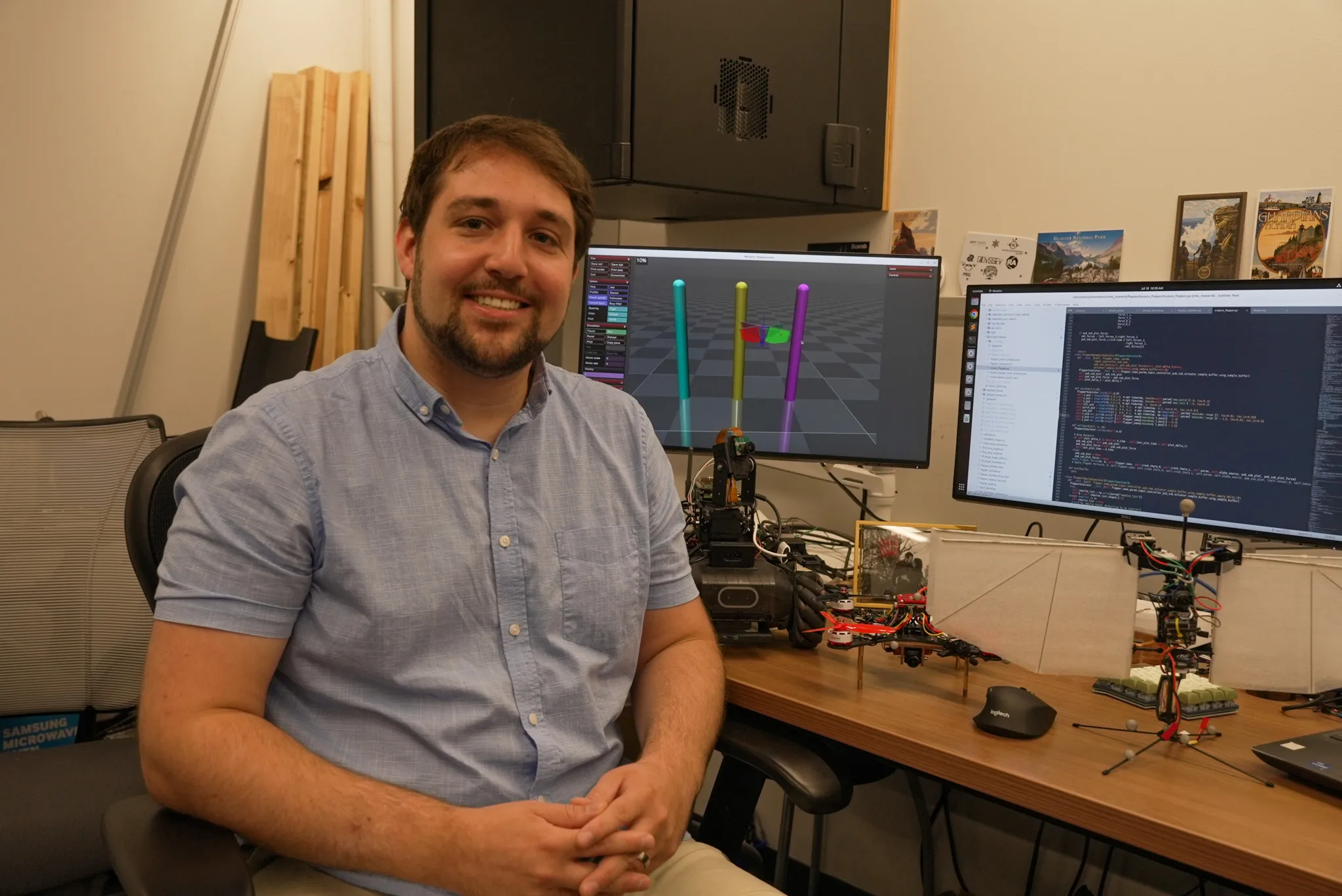
Tiny autonomous drones designed to mimic and support bee populations. Larger drones that can navigate difficult terrain with the agility of a hummingbird. Robots that learn to cook by watching YouTube videos.
These projects, and many more, were conceived, developed and tested by the University of Maryland’s Perception and Robotics Group, co-led by Yiannis Aloimonos, a professor of computer science, and Cornelia Fermüller, a research scientist in the University of Maryland Institute for Advanced Computer Studies (UMIACS).
A common thread in much of the group’s work is the ability to build computational systems that can mimic human or insect behavior with stunning accuracy.
Another thread is the vibrant cluster of graduate students populating the lab, currently numbering 25, with one of the senior students often serving as a lab manager responsible for supporting the group’s day-to-day-activities.
The latest student to take the mantle as lab manager is Levi Burner, a sixth-year doctoral candidate in electrical and computer engineering.
Burner, who is co-advised by Aloimonos and Fermüller, says his role is threefold: helping coordinate and manage activities in the lab, providing mentorship to new students, and conducting his own research that combines expertise in computer vision with novel algorithms that can mirror human cognitive behavior.
Aloimonos, who also has an appointment in UMIACS, says his personal preference is to never formally appoint a lab manager. Instead, he and Fermüller like to have one of their graduate students take the initiative and work their way into the role.
“At big universities, things happen, and people step in,” Aloimonos explains. “That’s exactly what happened with Levi. He joined the lab and was bringing skills and capabilities other students did not have.”
Burner’s research is currently focused on what he and his lab mates refer to as “embodied visuomotor representation.” It mimics how a person may not know the exact distance an object is from their body when reaching for it, but they can comfortably grab it because they’re aware of how far they can reach.
Burner is taking this concept and applying it to robotic systems. Instead of using meters or inches as the unit of measurement in the design process—sometimes limiting a robot’s potential capabilities—Burner, working with others in the Perceptions and Robotics Group, is making the robot itself the measuring tool.
This means that based on its interactions with the world, the robot calculates its own size, speed and limitations when trying to fit itself between gaps, travel certain distances, or even grab objects.
“Humans have no idea how many inches away things are, they just know how far away something is because they can touch it,” Burner explains. “We’re using the concept that the distance is measured in an action.”
Another project that Burner is working on involves a flying robot that flaps through the air with bird-like wings, as opposed to rotor-driven flight that is the norm for most aerial drones. 
Flapping robots are not unique—they have been heavily developed over the last decade, Burner says. But the rapid nature of the flapping motion causes the drone to shake, making it difficult for onboard cameras to stabilize the craft while performing tasks like inspecting a building or detecting gas leaks.
Using the flapping actions the platform takes to stabilize the onboard cameras is central to Burner’s current research.
Aside from research and managing the lab, Burner is also active in outreach, mentoring and teaching. He can often be seen on the ground floor of the Iribe Center, explaining the mechanics of autonomous robotics to young students visiting from area schools.
As the lab manager, he helps fellow graduate students acquire and assemble the equipment needed for their research. This is normally followed by one-on-one sessions where Burner shares his knowledge in areas a newer student may not be familiar with yet.
Burner says the multitude of tasks he balances—research, mentorship and outreach—is helping him prepare for a future in academia.
In 2023, Burner was named a Future Faculty Fellow by the A. James Clark School of Engineering, where he’ll learn the many responsibilities a tenure-track professor must balance.
“Because of the way Professor Aloimonos has structured his lab, I'm able to start that journey, and practice it beforehand, which will help a lot when I start my own lab," Burner says.
—Story by Shaun Chornobroff, UMIACS communications group